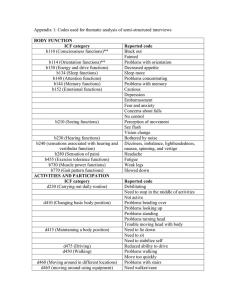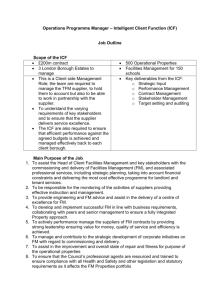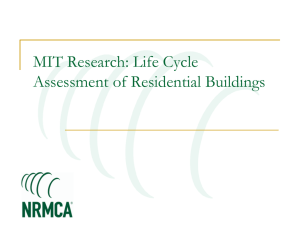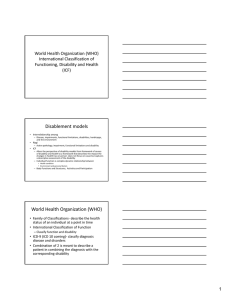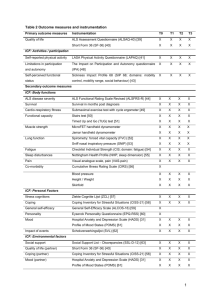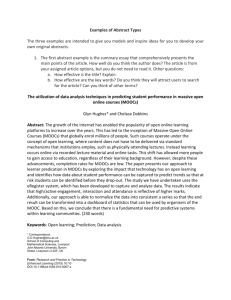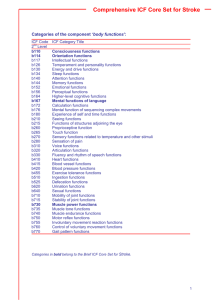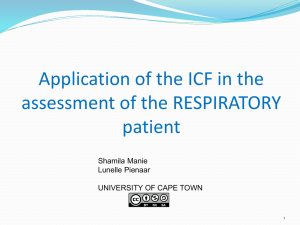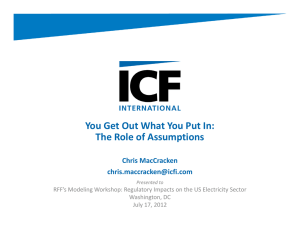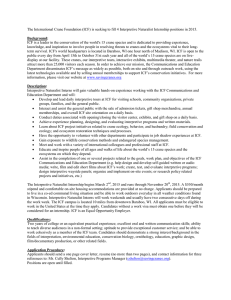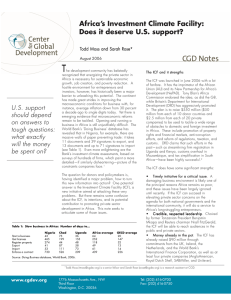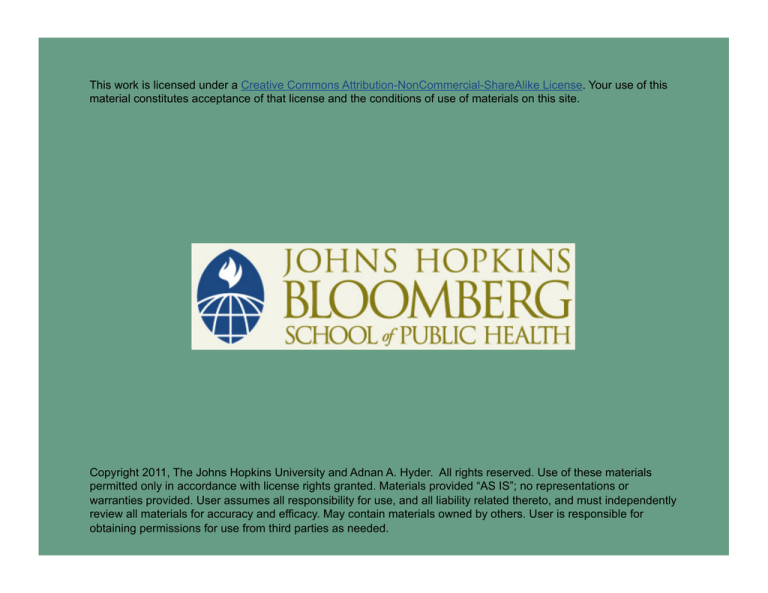
This work is licensed under a Creative Commons Attribution-NonCommercial-ShareAlike License. Your use of this
material constitutes acceptance of that license and the conditions of use of materials on this site.
Copyright 2011, The Johns Hopkins University and Adnan A. Hyder. All rights reserved. Use of these materials
permitted only in accordance with license rights granted. Materials provided “AS IS”; no representations or
warranties provided. User assumes all responsibility for use, and all liability related thereto, and must independently
review all materials for accuracy and efficacy. May contain materials owned by others. User is responsible for
obtaining permissions for use from third parties as needed.
Disability and Morbidity
Adnan A. Hyder, MD, PhD, MPH
Johns Hopkins University
Section A
Conceptual Framework for Transitions
between Health States: Illustrative
Transitions and States
4
Transitions and States
5
Transitions and States
6
Transitions and States
7
Transitions and States
8
Health States
Definitions and frameworks
9
Defining Health States
List of “domains of functioning” and “classification of limitation”
Total well-being vs. domains of performance “within the skin” only
Use of surveys for assessment
- Single global question
-
-
Activities of daily living in 6–10 domains (ADL)
More complex tasks; instrumental activities of daily living (IADL)
10
Defining Disability
ICD 1993: International Classification of Diseases, 10th Edition
(reference)
1980: International Classification of Impairments, Disabilities, and
Handicaps (ICIDH: WHO 1980)
- Impairment: loss of function or structure
-
-
Disability: functional limitation of activity
Handicap: role limitations, dependence
11
ICIDH—WHO 1980
12
ICIDH—WHO 1980
13
ICIDH—WHO 1980
14
ICIDH—WHO 1980
15
Defining Disability—ICF
2001: International Classification of Functioning, Disability, and
Health (ICF: WHO 2001)
-
-
-
Complements ICD 10
Evolution of ICIDH from consequences of diseases
To components of health (“neutral stand”)
16
ICF
Multi-purpose classification
Health and well-being
Goal: Scientific basis for understanding and studying health
states and health-related outcomes and their determinants …
… and to establish a common language for describing health
states …
17
ICF—2
ICF identifies health domains and provides standard and measurable
definitions of each
ICF is organized into three components
1. Body components
2. Activities and participation
3. Environmental factors
18
ICF—3: (a) Body Construct
Impairments in body function or structures (deviation from expected
norm)
Body functions
- Functions of body systems
Body structures
- Anatomic parts of the body
19
ICF—4: (b.1) Activities and Participation
Single common list of life areas
Performance
- What is done in the current environment
- Involvement, lived within context
Capacity
- Ability to do what is expected by ICF
- Why performance may be so
- Concept of “uniform environment” for comparison purposes
20
ICF—5 (b.2) Example
Activities/participation information matrix
Performance
Capacity
1. Learning and applying knowledge
2. General tasks and demands
3. Communication
4. Mobility
5. Self-care
6. Domestic life
7. Interpersonal interaction
8. Major life
9. Community, social, and civic life
21
ICF—6: (c) Contextual Factors
Environmental
- Physical, social, and attitudinal
-
External to the individual
Personal
- Life and living of the person
- Within the individual (race, gender, etc.)
- Not classified
22
ICF—7: Use of ICF
To describe health states in a standard way
Body functions/structures and either performance or capacity
always described
These descriptions can be used for valuations of health states
See: http://www.who.int/classifications/icf/en/
23

